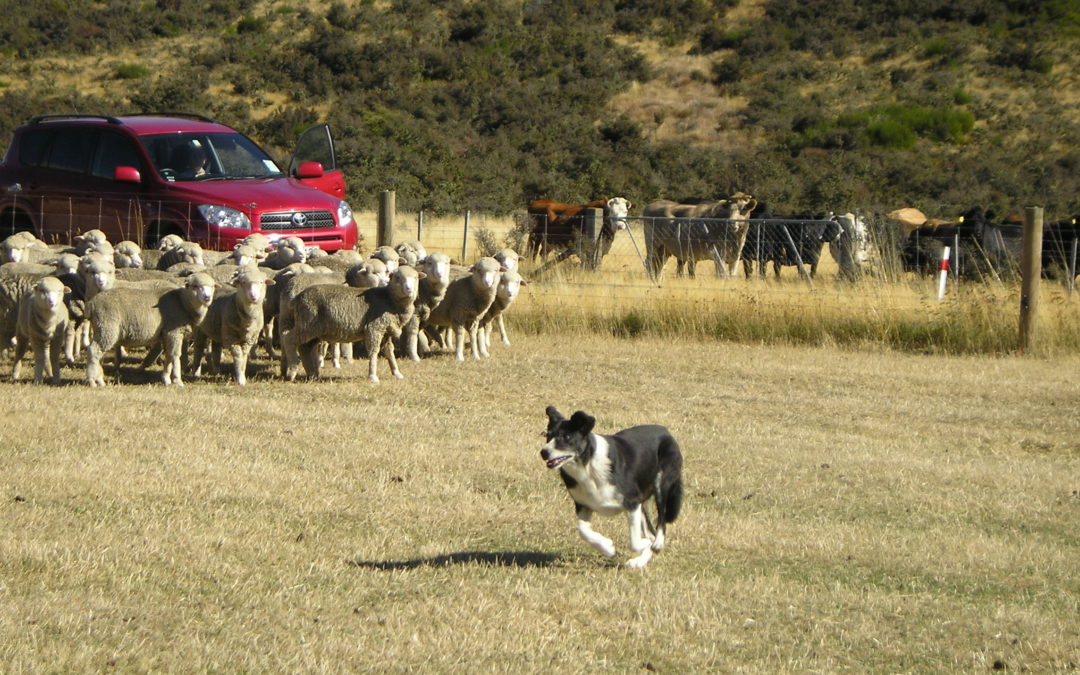Most of my very best vacations have been walking holidays, and quite a few of my favorites have been in places where there are lots of sheep. (I’m not entirely sure of causality there – but seeing sheep does make me happy.) Because of this, I’ve seen quite a few demonstrations of how sheepdogs do what they do.
At work, I’ve been preparing a training session on communicating to connect, and it has occurred to me that just showing clips from sheepdog trials might be all I need. A sheepdog at work provides an absolutely brilliant example of some core principles of good communication.
Imagine a Border collie named Lucky, who is helping a shepherd bring the flock down from the hills for the winter. Lucky gets a subtle signal from the shepherd, and starts running clockwise around the flock, gathering the stragglers. More signals tell Lucky to stop in his tracks, to reverse direction, to go slow or speed up. Working together, dog and shepherd bring the sheep together and drive the flock home.
So yes, there’s amazing communication between Lucky and the shepherd – but Lucky uses communications best practices in his interactions with the sheep, too. He chooses tactics that are
- Outcome-based: The dog doesn’t randomly chase sheep around. He understands what the shepherd is trying to do (herd the sheep in a certain direction), and as the situation changes, Lucky adjusts direction and approach depending on what needs to be done. Good communicators use different strategies depending on the goal.
- Contextual: He has to steer the sheep around the obstacles that keep the flock from going where the shepherd wants them to go. There’s no use trying to get the sheep to go forward if there’s a barrier. For human communicators, this means knowing your audience’s perspective, so that you can work around any barriers to your message getting through.
- Audience-specific: Sheep aren’t all the same, and Lucky knows they need different encouragement. Sometimes he has to nip at one sheep’s heels, sometimes he can just take a step in their direction and they move. For us, knowing what sort of message and tactic will resonate best with key stakeholders helps us shape our communications for the audience.
When Lucky is successful, all his communication efforts result in the flock moving in the direction he intended. And one more analogy here: once the sheep are in the fold, no one remembers exactly how Lucky made it happen.
Photo: I took the shot on a vacation in New Zealand years ago!




